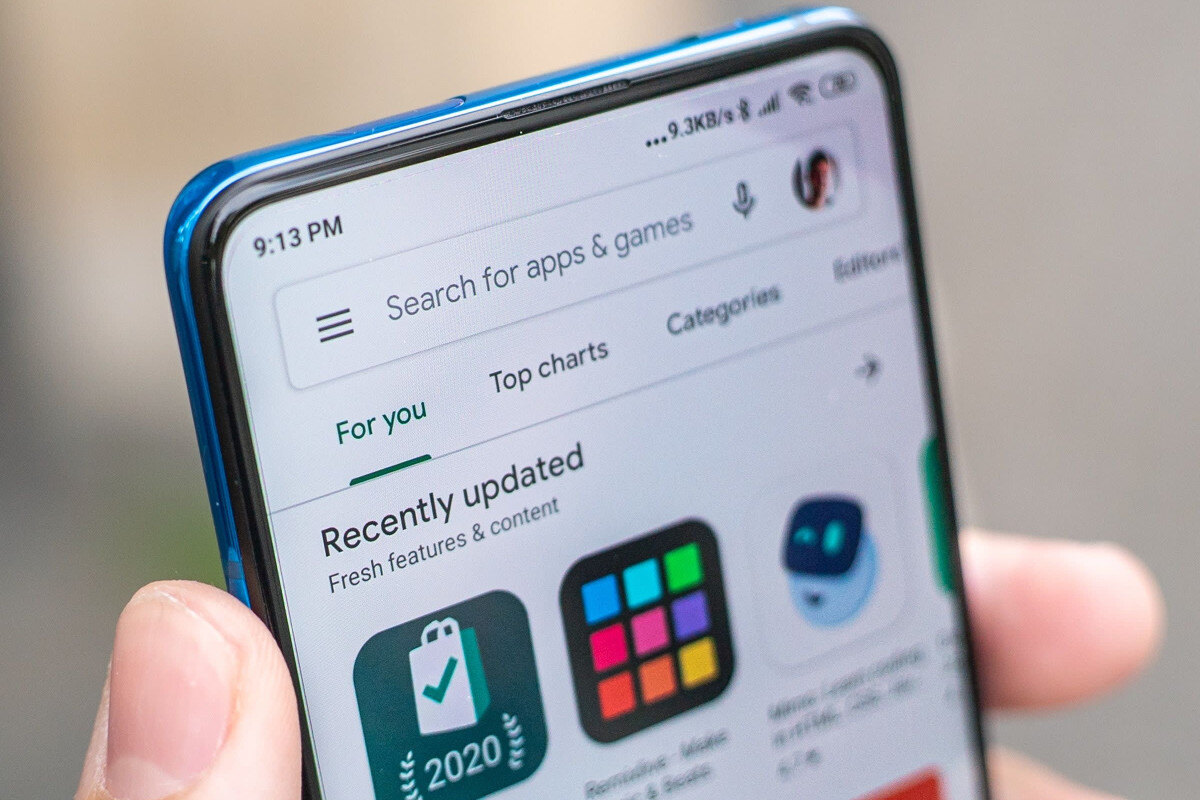20 min read
23 Strategies for Your Top 1% App Store Optimization Marketing Plan
In the consumer behavior-driven space of restaurants, c-stores, and retail outlets, a customized mobile app is crucial for improving your customers’...
5 min read

Operating similarly to a search engine optimization (SEO) strategy for app stores, app store optimization must be studied and implemented to boost your app’s visibility in a crowded marketplace. With so much work put into development, overlooking ASO is a misstep that will cost you greatly.
So, when you’re ready to optimize, how can you improve your app performance? In this article, we go over ASO best practices and what they can do for you.
No matter whether your business is on the Apple App Store, the Google Play Store, or both, ASO helps your hospitality or retail business show up in relevant app store searches—as long as you know how to leverage it. When your app is up top in search results, it makes it more likely for users looking for apps of that nature to explore and download it. Especially if your app is unique and useful, ASO complements it with improved app ranks and stronger engagement.
Yet like with SEO, you need a strategy—and not just any strategy, but a well-informed one. It’s not enough to use bright colors, attractive wording, and hope for the best. Here are seven tried-and-proven ASO best practices:

While those seven basic principles should be staples of your overarching ASO strategy, there are also two overlooked practices that can give you the advantage you need:
When you publish an app to the app store, there’s still an element of trial and error despite a strong preparatory strategy. A/B testing (or split testing) is a proven technique to bring your app’s outcomes more into your control, as it allows you to test two versions of a screenshot or app icons, as an example.
Perhaps you find that the orange-dominated app icon resonates better with users than the yellow one. The slightest changes can have a big impact on engagement and app downloads, and A/B testing helps you figure out what works.
While screenshots and annotated images already do wonders to highlight your app, video trailers give an even better sense of how the app works. Users can watch a short video that highlights your app’s most valuable features rather than spend that time reading text and viewing a carousel of static images.

We mentioned including positive ratings and reviews in your app listing, but how do you acquire them? It’s one thing to have users download and use your app and another to have them actively rate and review the app. After all, what’s in it for them?
To create a positive feedback loop and acquire thousands or tens of thousands of reviews, you can proactively engage your users by using in-app prompts or banners, offer incentivized honest reviews, and even send personalized requests through email or SMS. Users don’t want to feel as though you want reviews simply to benefit you, but rather because you value their opinion.
Customer feedback doesn’t just serve the purpose of enticing new users to use your app. Internally, you should regularly monitor feedback for any valuable opportunities for improvement.
If you find that many users recommend adding in a specific feature, you should consider developing it as soon as you can. This feedback provides the dual purpose of making impactful improvements and to help ASO.
ASO is all about relevance, which is why localization is so important. When your app’s content is adapted to different geographical markets and languages, you can build a much stronger connection with multiple audiences.
Localization also often involves transcreation—adapting content in one language to culturally resonate with another language without changing the message’s original meaning. An example is that in Western countries like the United States and Canada, green can be used for apps centered around organic or healthy foods. Meanwhile, China sees red as representing prosperity and good fortune.
Language localization also goes beyond literal translation, but also incorporating colloquial terms, slang, or other native language elements that make the app feel familiar and useful to them. There are also design considerations, such as whether certain characters will be easy to read on the current interface.
Since the app store is isolated from other platforms and within its own ecosystem, cross promoting your app store page throughout your other digital marketing channels like email, social media, app store marketing, website landing pages, and blog articles increases its exposure.
Your own website and social media channels provide a space to market your app and provide call-to-actions (CTAs) to download it through respective app stores. The more you can link directly to your app store page, the more you can direct traffic from other platforms. For example, you might use email campaigns to inform users about new promotions or updates or paid ads to target those looking for similar apps in your category.
Aside from exposure, credibility and trust need to be proven for your audience. Collaborating with influencers improves your business’s trustworthiness, as influencers funnel their existing audience toward you by personally endorsing your app. These partnerships could involve a simple app review, exclusive discounts, or even a more nuanced co-creation partnership.

To truly find out how your ASO efforts are faring, ASO analytics tools give you a real-time look into app performance, keyword performance, conversion rates, and other useful metrics. Consistently checking on these insights empowers you to make instantaneous improvements and fine-tune your metadata whenever needed. While app stores don’t have built-in analytics features, you can use platforms like MobileAction or Sensor Tower to watch your app’s paid and organic performance.
If you want to take an even greater proactive approach to your data, predictive analytics anticipate user behavior to highlight trends in the app market. Investing in a tool like AppTweak lets you harness AI for useful features like competitor tracking and market intelligence. That way, you’ll be able to forecast any keyword trends, check out what your competition is doing that’s working, and pinpoint opportunities before other businesses do.
Part of ASO is staying agile and adaptive. Even after your app store listing is up and running, the ASO process continues (just like SEO for content marketing). Every part of your app metadata should stay fresh and relevant to current trends, with updates made at regular intervals. Without this monitoring, you could miss new buzzwords in your niche and chances to market your app to its full potential.
With SEO, Google’s algorithm constantly evolves and changes, leaving website owners and brands to stay informed. The same goes for ASO, where the way apps are discovered and ranked change over time. It may happen that certain ranking factors, like review importance, could increase in value, while other factors decrease.
If you haven’t paid much attention to app store optimization until now, this is your sign to start. Finding the perfect ASO strategy is about doing the basics well and implementing overlooked techniques that could place you a cut above the rest.
Already have an app store listing? Start by auditing your current ASO practices against the strategies we’ve covered and see how you can refine your approach.
Our frictionless loyalty and online ordering solutions directly complement ASO efforts by engaging and retaining your users for better app store rankings. Get a demo now to learn more. For deeper insights into online ordering, read our 2024 Online Ordering Guide.